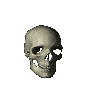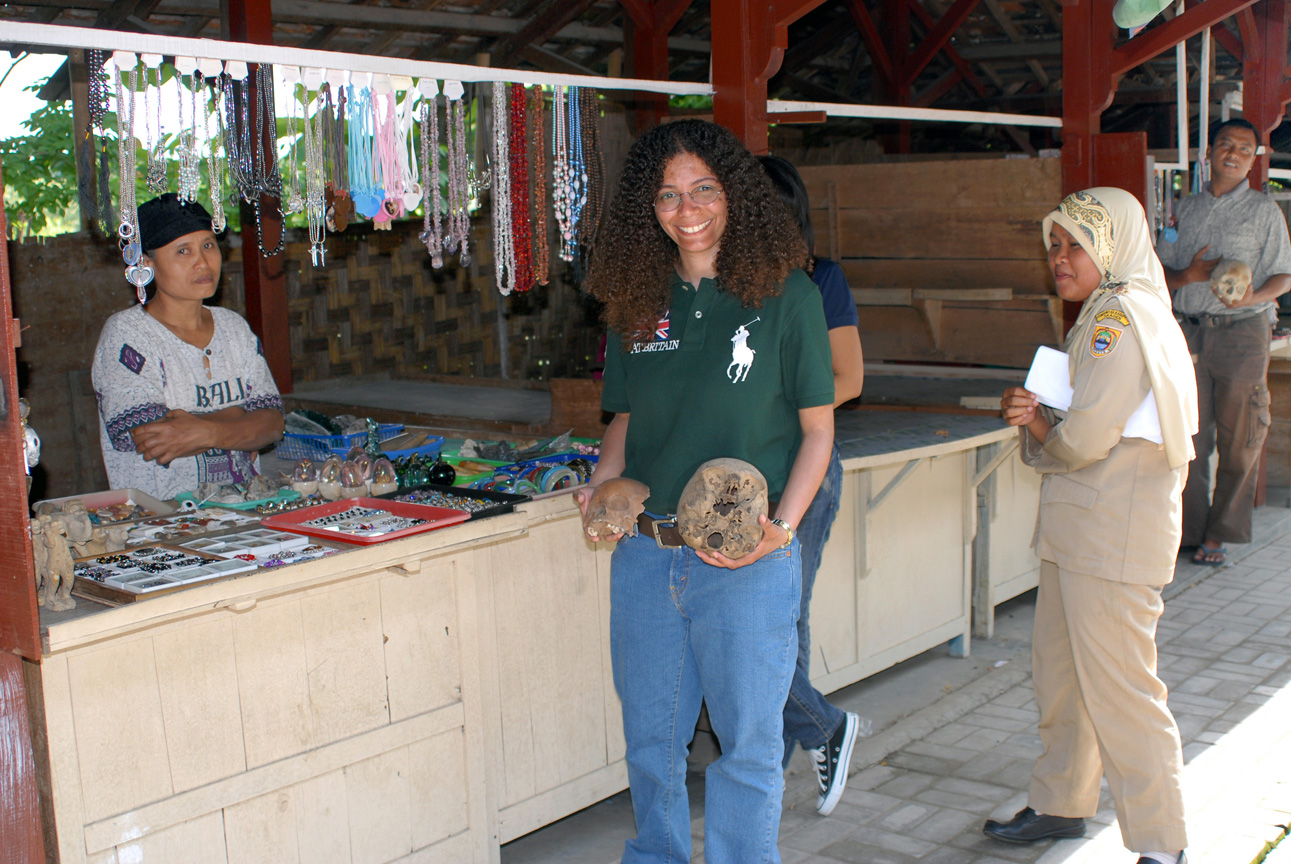 |
|
 |
 |
|
 |
![]()
 In
1856 at Feldhofer Cave, near Dusseldorf Germany, Neandertal Man informally
introduced himself to the world. Named after the valley in which he was
discovered (Neander Tal), this hominid would drive anthropologists mad
for over 100 years. Intially regarded as dim-witted, beast-like brutes,
Neandertals were the ancestors that nobody wanted. This misconception was
due to French paleontologist Marcellin Boule. Upon examining the remains
of the La Chapelle-aux-Saints Neandertal from France, also known as the
'old man' of La Chapelle-aux-Saints, Boule declared that these hominids
were unintelligent due to their low-browed brains. He ascertained that
the only thing they could produce was their crude tools and not much else.
Boule also believed that "the beast had walked with bent knees and a shambling
gait, his head slung forward on a squat neck, his big toe splayed out chimpanzee-like
to the side" (Shreeve 1994:18). Of course later we would learn that this
interpretation was incorrect. Boule's prejudices got in the way of his
examination of the elderly hominid. In reality, the 'old man' of La Chapelle-aux-Saints
was crippled and extremely arthritic, which Boule somehow managed to overlook.
Some anthropologists believe it was merely impossible to miss the evidence
of the 'old man's' arthritis because it was so obvious to see. Regardless,
Boule's analysis left a permanent scar on the Neandertals image that would
not begin to heal until many years later.
In
1856 at Feldhofer Cave, near Dusseldorf Germany, Neandertal Man informally
introduced himself to the world. Named after the valley in which he was
discovered (Neander Tal), this hominid would drive anthropologists mad
for over 100 years. Intially regarded as dim-witted, beast-like brutes,
Neandertals were the ancestors that nobody wanted. This misconception was
due to French paleontologist Marcellin Boule. Upon examining the remains
of the La Chapelle-aux-Saints Neandertal from France, also known as the
'old man' of La Chapelle-aux-Saints, Boule declared that these hominids
were unintelligent due to their low-browed brains. He ascertained that
the only thing they could produce was their crude tools and not much else.
Boule also believed that "the beast had walked with bent knees and a shambling
gait, his head slung forward on a squat neck, his big toe splayed out chimpanzee-like
to the side" (Shreeve 1994:18). Of course later we would learn that this
interpretation was incorrect. Boule's prejudices got in the way of his
examination of the elderly hominid. In reality, the 'old man' of La Chapelle-aux-Saints
was crippled and extremely arthritic, which Boule somehow managed to overlook.
Some anthropologists believe it was merely impossible to miss the evidence
of the 'old man's' arthritis because it was so obvious to see. Regardless,
Boule's analysis left a permanent scar on the Neandertals image that would
not begin to heal until many years later.
 |
| The
'old man' of La Chapelle-aux-Saints.
These were the original remains that Marcellin Boule studied and declared that Neandertal man was a bestial hominid that could not walk upright. |
 Today
we know that Boule's predictions about Neandertals are not true. With twentieth
century scientific advances and modern interpretations a new views of Neandertals
and their culture have been provided. This is the world of Neandertals,
this is their life and their story, but in order to properly understand
it, we must first understand them. Journey with me into their world as
we go in search of the truth about these hominids.
Today
we know that Boule's predictions about Neandertals are not true. With twentieth
century scientific advances and modern interpretations a new views of Neandertals
and their culture have been provided. This is the world of Neandertals,
this is their life and their story, but in order to properly understand
it, we must first understand them. Journey with me into their world as
we go in search of the truth about these hominids.
|
|
 |
|
|
|
|
|
|
|
Click on the flag***!  |
![]()
Copyright by Carlina de la Cova, 1997